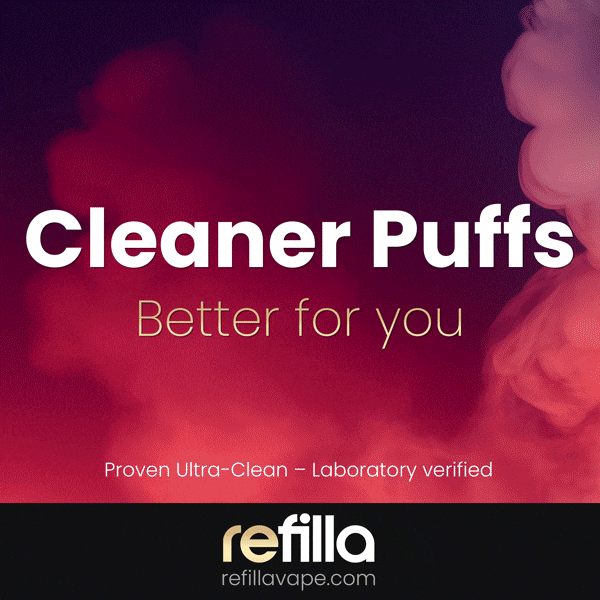You’ve made the choice to quit smoking tobacco with the help of a flavoursome vape. Great decision!
But there’s a lot more to vaping than just the flavours. Our beginner’s guide to e-liquid will fill you in on everything you need to know and set you on the path to a smoke-free future.
What’s in Your E-Liquid
1. Nicotine
Not all e-liquids contain nicotine. But for most people trying to transition from smoking, this is an important component. New vapers often start with higher nicotine liquids and then gradually reduce their nicotine intake over time.
The nicotine used in e-liquids comes in two varieties. The first is freebase nicotine. Freebase nicotine is the most prevalent in vaping, providing a slow release to the bloodstream and a noticeable throat hit in higher doses.
The second form of nicotine is nicotine salt. Nicotine salt has been steadily gaining popularity in vaping over the last few years. Compared with freebase nicotine, it releases into the bloodstream more quickly and produces a much smoother throat hit.
To see which is the best variety of nicotine read: Freebase vs Nic Salt: What’s The Right Choice For You?
2. Propylene Glycol (PG)
PG has a wide range of applications in food and medical products and is used in e-liquid primarily for its flavour-carrying properties.
PG has low viscosity, making it ideal for e-liquids that are intended to be used in vaping devices with small wicking ports.
PG can impart a stronger throat hit when used as a large proportion of an e-liquid blend and some people are sensitive to it. If you find that you are sensitive to PG, it’s best to use e-liquids with low PG content.
3. Vegetable Glycerine (VG)
VG is derived from a range of vegetables and has a wide range of applications in food products. VG has a high, syrup-like viscosity and produces large amounts of vapour when heated. In addition to this, VG imparts almost no throat hit, which is part of the reason that it’s become so popular.
Over the last few years, 70% VG has become the industry standard for many e-liquid blends. Normally any blend that contains more than 70% VG is labelled “high VG” and is not suitable for all devices.
Understanding Nicotine Content
The nicotine dose of an e-liquid is generally expressed in one of two ways. The first and most common way is by expressing in milligrams (mg).
For example, if an e-liquid contains 18mg of nicotine per millilitre, this would normally be expressed as 18mg on the bottle.
Alternatively, nicotine content can be expressed as a percentage. For example, an e-liquid that contains 18mg of nicotine per millilitre would be 1.8% nicotine.
Since 2016, the Tobacco Products Directive (TPD) has been enforced in the EU. Among other things, these rules set a limit of 10ml on any e-liquid bottle that contains nicotine.
The ‘Short Fill’ Workaround
The TPD presented a huge inconvenience for many vapers who had been used to the industry standard 30ml-60ml bottle size. In response to this regulation, the industry created “short fill” products.
Short fills are typically 60ml bottles, filled with 50ml of e-liquid, which contains no nicotine. The lack of nicotine content means this is allowed. The user can then choose to add a “nicotine shot”, which is typically an unflavoured 10ml bottle of 18mg/ml nicotine e-liquid. This results in a final product that is 60mls of 3mg/ml e-liquid.
For those who require higher doses of nicotine, there are some short fill products with more room for shots, though if you intend to vape higher than 6mg/ml e-liquids, it may be more convenient to stick to the 10ml bottles which are pre-mixed with nicotine.
Keeping it Fresh
Like many other consumer products, e-liquids do have a shelf life. Typically the limiting factor is the oxidisation of nicotine and degradation of flavour compounds.
Most e-liquids should maintain their quality for one to two years and if in doubt, check your bottle, as the manufacturer will state an expiration date.
Provided you store your e-liquids properly, in a cool dark place, they can be good to vape after this expiration date. If the e-liquid still tastes normal and doesn’t impart a strong peppery taste or sensation from oxidised nicotine, it’s still fine to vape.
Flavour
No guide to e-liquid would be complete without a few words on flavour.
Basic e-liquids may use a single flavouring, while more advanced blends can use a number of flavours in conjunction to create a unique flavour profile.
All flavourings used in e-liquids are food grade and there are thousands to choose from. This means there is practically an infinite number of flavour combinations possible.
Since 2020 menthol cigarettes have been banned across the EU. If you’re a long-term menthol smoker, this might be the push you needed to move on to a less harmful product. We have prepared a guide on which kits and e-liquids are best to make the switch.
Best E-liquid Flavours
Diy E-liquids
Whether you’re extremely picky on flavour, want to learn a new skill, or simply save a bit of money in your vape budget, DIY e-liquid is a great option, provided you go about it the right way.
Get started by reading our: Vape basics: Six steps to making your own e-liquid
The Wrap
Getting the right ‘juice’ for you can be fundamental to a successful switch. Hopefully, this beginner’s guide to e-liquid will make your transition to vaping as smooth as a high VG vape experience.









